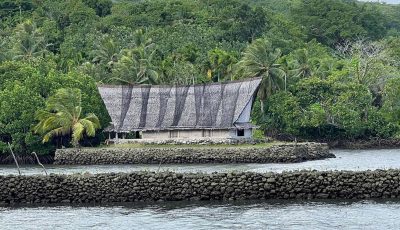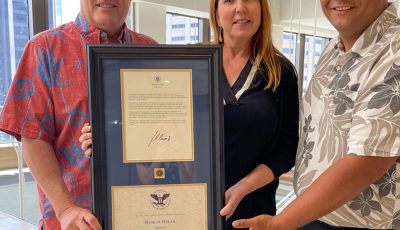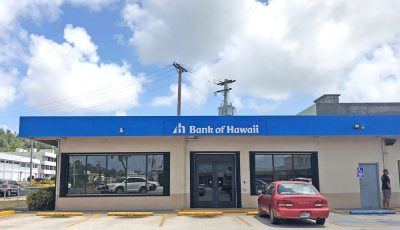USDA agencies provide producers and community with safety nets
HONOLULU—Agricultural producers and others who were negatively impacted by Typhoon Soudelor may be eligible for assistance through the U.S. Department of Agriculture. The Farm Service Agency, Natural Resources Conservation Service and Rural Development have marshalled staffing resources and programs to support the long-term recovery for businesses and families in the CNMI.
Farm Service Agency program resources for commercial agricultural producers include:
• Non-Insured Crop Disaster Assistance helps to offset production losses for those producers who were signed-up for the program in advance.
• Tree Assistance Program is available for qualifying fruit orchardists of papaya, banana and tropical fruits. The program provides cost share to clean up, rehabilitate and replant.
• Livestock Indemnity Program helps offset ranchers’ losses of cattle, goats or sheep.
• Emergency Livestock, Honey Bee and Farm Raised Fish may be available to producers with losses of livestock, honey bees and fish.
Farm Loan Programs offers low-interest loan to assist qualified producers with cost of cleanup and replanting or restocking. Existing borrowers with FSA should contact their loan officer once they anticipate having problems making their regular payments, as FSA may be able to modify their payment schedule or help them to meet other needs. Emergency Loans are available for qualified borrowers due to the Presidential Disaster Declaration.
Tom Camacho, county executive director for FSA Guam and CNMI, reported, “Farm Service Agency will be on Saipan on Aug. 8-11 to make assessments of the damages to farms and ranches. Producers with damages will be asked to complete required reports of losses, so that assistance can be quickly and efficiently provided to qualifying farmers.”
Farm Loan Program technician Doreen Rivera said, “Individuals who have questions about availability of loans to meet financial needs during this challenging time and to restore their farm or ranch operations should contact the FSA County Office. Farm Service Agency is here to provide that critical financial safety net.”
“Based upon initial reports of damages in Saipan and Tinian, we are very concerned for producers’ livelihoods as they begin recovery from the storm,” said, Diane Ley, State Executive Director for FSA in Hawaii and the Pacific Basin. “The FSA County Office staff are ready to assist producers every step of the way with applications for assistance.”
Producers can call the FSA County Office at 234-0896 to schedule an appointment. When calling in, producers should be prepared to provide the following information:
• Name and contact information to allow for follow-up scheduling of an appointment
• Location of farm
• Type of crop
• Estimated acres/trees lost or percentage of crop lost
• Description of structural damage
• Assistance requested; e.g., disaster assistance or farm loan
For more information about FSA’s programs including what to do in advance of the next disaster visit www.fsa.usda.gov/hi or for a more comprehensive look at USDA disaster assistance visit: www.usda.gov/disaster.
In addition, USDA’s Natural Resources Conservation Service partners with Conservation Districts and others to provide technical and financial assistance to private landowners. The main goal of NRCS is to protect, enhance, and preserve our soil, water, air, plants, and animals using sound science and expertise. NRCS has two programs that may be utilized following the natural disaster:
[if !supportLists]· [endif]Emergency Watershed Protection is NRCS’s main cost-share program available to local governments for recovery assistance in regards to watershed impairments that pose threats to life and property, such as debris clogged streams and landslides. [if !supportLists]· [endif]Environmental Quality Incentives Program (EQIP) can also be used to reapply previously installed contracted practices that were damaged or destroyed by a natural disaster. Eligible applicants must have an active or current EQIP contract.“We are anxious to inform you of the federal assistance available to help you recover from this natural disaster,” said Bruce Petersen, NRCS Director for the Pacific Islands Area.
Ag producers may contact NRCS in Guam at (671) 300-8576 or (670) 287-0807 for the Commonwealth of the Northern Mariana Islands. To learn more about the NRCS programs and services available, visit www.pia.nrcs.usda.gov.
The USDA’s Rural Development is exploring ways to provide support and assistance to the CNMI community. For more information contact the RD Office in Guam at (671) 472-7361 or visit http://www.rd.usda.gov/hi. (USDA)



























